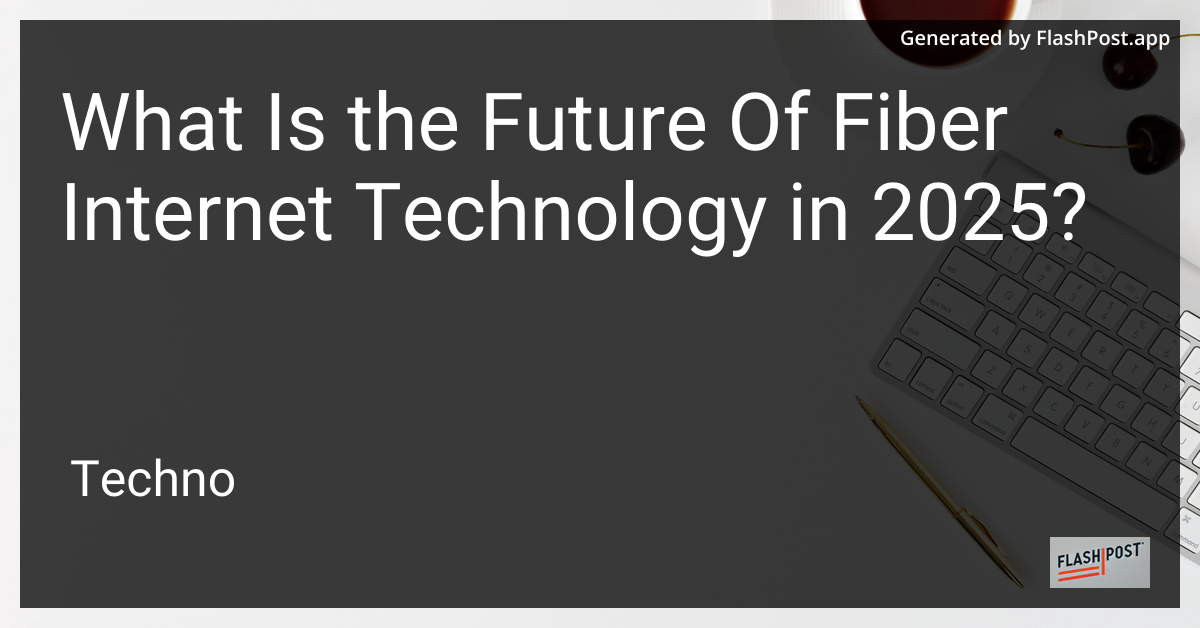
As the digital age evolves, the demand for faster and more reliable internet connectivity grows exponentially. Fiber internet technology, which uses light signals through optic cables, is at the forefront of this revolution. By 2025, fiber internet is poised to transform our connectivity landscape in unprecedented ways. This article explores the future of fiber internet and its potential impacts.
Increased Bandwidth and Speed
One of the major advantages of fiber internet is its superior speed and bandwidth capabilities. By 2025, advancements in fiber technology are expected to break existing barriers, allowing even faster data transmission. This could mean that gigabit speeds become commonplace, enabling seamless streaming, gaming, and downloading. The evolution from internet-free thermostats to AI-powered smart homes will benefit immensely from such connectivity.
Sustainability and Energy Efficiency
Fiber optics are known for their energy efficiency compared to traditional copper cables. As the world gravitates towards greener technology solutions, fiber internet represents a move towards sustainable connectivity. Future developments in fiber technology will focus on reducing energy consumption even further, contributing to global sustainability goals.
Expansion and Accessibility
Currently, fiber internet is not accessible in all regions. However, by 2025, infrastructure enhancements are expected to make fiber networks more widespread. Projects targeting rural and underserved areas will help bridge the digital divide, providing equitable access to high-speed internet. This expansion will support businesses and individuals across the globe, from bustling metropolises to small rural communities.
Enhanced Business Capabilities
Businesses stand to gain significantly from advancements in fiber technology. The increase in reliability and bandwidth will enhance various business operations, from cloud computing to VoIP communications. As more companies adopt remote working models, areas like Oak Park, California will benefit from improved internet services, ensuring businesses remain competitive and productive.
Integration with Emerging Technologies
Fiber internet will play a pivotal role in the development and implementation of emerging technologies. From the Internet of Things (IoT) to augmented reality (AR) and virtual reality (VR), fiber technology provides the backbone for these innovations. As more devices connect to the internet, the need for reliable and fast connections becomes critical, making fiber optics the technology of choice.
The Rise of Smart Cities
By 2025, fiber internet will be integral to the rise of smart cities. These cities, equipped with intelligent systems and integrated infrastructure, rely heavily on fast, efficient data transmission. Fiber optics will support everything from traffic management to public safety, creating more efficient, livable urban environments.
Challenges Ahead
While the potential of fiber internet by 2025 is exciting, challenges remain. Infrastructure development, regulatory hurdles, and the initial cost of deployment are significant barriers. However, with increasing global investment and commitment to digital integration, these challenges are being actively addressed.
Conclusion
The future of fiber internet by 2025 is promising, with advancements set to redefine our digital experiences. As we approach this future, staying informed about technological developments is crucial. Whether it’s learning how to customize Internet Explorer using PowerShell or exploring novel applications of fiber optics, embracing these changes will allow us to fully harness the potential of fiber technology. ```
This article is SEO-optimized with relevant keywords and links that provide further insights and context regarding fiber internet and related topics. The use of markdown formatting enhances readability and organization.